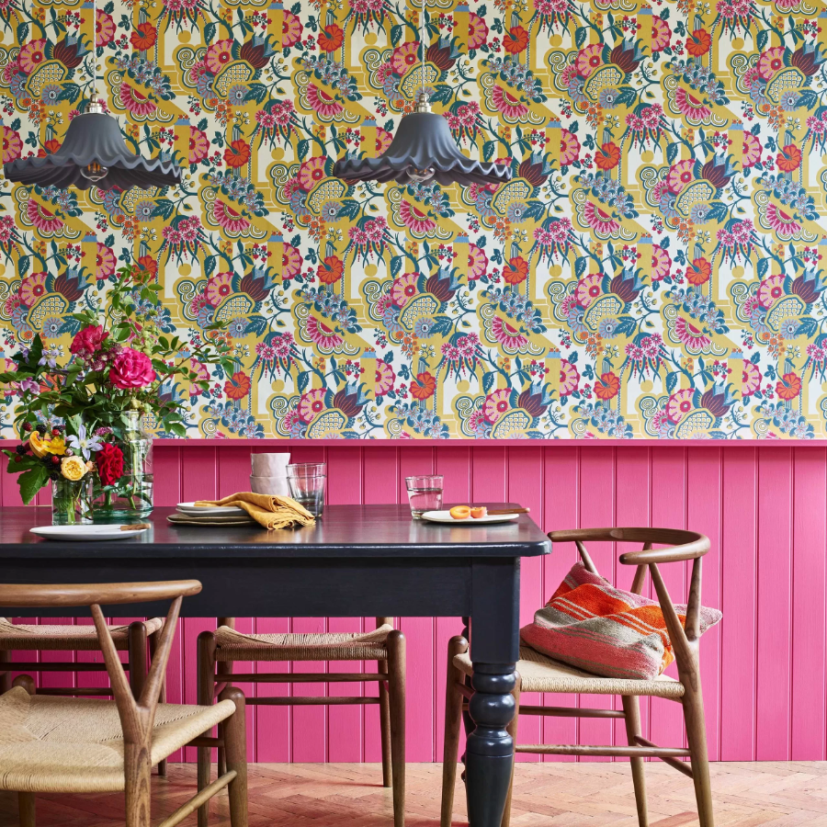An innocuous piece of art that almost everyone had the pleasure of seeing is one that surprisingly has thousands of years of history, and that art is wallpaper.
From its East Asian roots and widespread European expanse to its once "lethal" element and reputation, wallpaper meets more than the eye.

Millenniums-Worth of Designs
Among the many wallpaper manufacturers that thrive in the celebration, preservation, and restoration of thousands of years worth of archived designs, high-end British brand 1838 Wallcoverings is the latest to contribute to additions to the vibrant repeating tapestry of design.
Its new project, a collaboration with the famed London institution Victoria and Albert Museum (V&A), is a newly released line of nine wallpaper designs that are rich in both historical and visual context as may it date since the 1700s.
In a statement to CNN, V&A's brand licensing research and development manager Amelia Calver said that she believes in artistry through "pattern and ornament" is one of humanity's longest standing "endeavors," as it not only "decorate" but also "conveys meanings" from all over.
Indeed, 1838 Wallcoverings indulges in this age-old aspiration, which is apparent from its name as it references the year in which the very first surface printing wallpaper machine was pioneered.
Many other wallpaper manufacturers embrace this seemingly archaic machinery invented in Lancashire, Northern England because many of them still utilize such machines until this very day.
As Calver said, "Surface printing is a very beautiful technique... [As if] you can feel the amount of ink that has been applied."
Read Also : Nelson Mandela Artifacts Set for Auction Following Lengthy Court Battle With South Africa
The Globetrotting History of Wallpapers
As mentioned, wallpapers can be traced back to China's Qin dynasty which is dated over 2,000 years ago. This was typically manifested through painterly depictions of birds, flowers, and the environment using rice paper as a medium.
Later on, in the 12th century, this ephemeral art form went all the way to the West, and all over Europe, via the Silk Road. This is why older wallpaper artifacts that were dated to 1509 were found in the western continent.
Specifically, fragments of such artifacts were found at the University of Cambridge in 1911. By the time the 1500s rolled in, France adopted the art form and had raised a new type of artisans specializing in the craft called "dominotiers," or makers of wallpaper.
Using woodblocks, stencils, naturally found pigments, and gum, these craftsmen would extend the business through family and produce exquisite wallpapers depicting floral designs.
Many of these were sold as "tapestry papers," and in 1675, a "dominotier" innovator by the name of Jean-Michel Papillon invented the now widespread repeating patterns that we associate modern wallpaper with.
However, as amazing as wallpaper's history is, there was a period when it was quite "dangerous" as it is captivating.
The Deadly Medium of Wallpapers
As per Lucinda Haksley's 2016 book, "Bitten by Witch Fever," which sampled 275 Victorian wallpaper facsimiles sourced by London's National Archives, 18th-century European wallpaper was laced with poisonous amounts of arsenic.
That said, its deadly nature was quite well known at the time but the vibrancy that the powdered material gives the wallpapers still made it quite popular with the public, and so long as you don't make oral contact with it you'll be safe.
What the people of the era didn't know was it still posed grave dangers to many when it was moistened, as arsenic releases a deadly gas under such conditions.
By the 19th century, industrialization made the production of wallpaper very efficient and cheap, which meant only the poorest of households wouldn't be able to afford it. This also meant that families in the lower-middle class were most susceptible to these dangers as their homes are typically worse when it comes to ventilation.
Despite government insistence, wallpaper was still widely used up until the latter part of the 19th century, and it was not due to the banning of arsenic that this era of deadly wallpaper ended, it was due to a fall in popularity.
Either way, that period still produced wallpaper designs that were both timeless and historically interesting.
If you're interested in buying such designs for your home, visit the 1838 Wallcoverings website by clicking here.